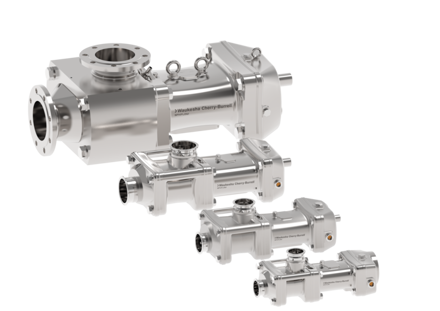STORIES IN THE MAKING
Demystifying Positive Displacement Pumps: Types, Functions and Benefits
Positive displacement pumps, the workhorses of fluid transfer, come in a range of types, each designed for specific applications. In this blog post, we will delve into the world of positive displacement pumps, exploring their diverse types, functions and advantages.
Rotary Pumps: Rotary pumps are known for their continuous rotary motion. The most common rotary types include gear, vane and lobe pumps. Gear pumps consist of two meshing gears that trap and transfer fluid between the gear teeth and pump casing. Vane pumps employ rotating vanes that slide in and out of slots, creating chambers to capture and displace fluid. Lobe pumps utilize rotating lobes to move fluid between the lobes and the pump casing. This design can run speeds in the 1000 RPM range and have a low Net Inlet Pressure Required (NIPR) value. Rotary pumps output is a sine wave due to the varying displacement output of the design.
External Circumferential Piston (ECP) Pumps: ECP pumps are like rotary pumps in that their continuous rotary piston motion create an inlet suction and discharge output flow. This design makes for a constant and accurate displacement output with thin to viscous products. This design has, long internal sip paths, low NIPR requirements, accurate output flow, while handling soft particulates very well. These pumps are used in food and beverage and chemical applications.
Reciprocating Pumps: Reciprocating pumps, also known as piston pumps, employ a back-and-forth motion to transfer fluids. They consist of a piston or diaphragm that moves inside a cylinder. When the piston retracts, it creates a vacuum, drawing fluid into the chamber through an inlet valve. As the piston advances, it compresses the fluid, closing the inlet valve and opening the outlet valve, resulting in fluid discharge. Reciprocating pumps are ideal for high-pressure applications and can handle a wide range of viscosities. They find extensive use in industries such as oil and gas, chemical processing and power generation.
Progressive Cavity Pumps: Progressive cavity pumps, also known as eccentric pumps, operate using a rotating helical rotor and a stationary rubber stator. As the helical rotor turns and seals in the stator, the pumped product flows through the sealed cavities. A progressive cavity pump applications include grease, oil and select compatible chemicals.

Peristaltic Pumps: Peristaltic pumps, also known as hose pumps or tubing pumps, operate on a unique principle. They feature a flexible tube or hose that is compressed by rollers or shoes, creating a peristaltic motion. As the rollers squeeze the tube, fluid is trapped and pushed through the hose, resulting in fluid transfer. Peristaltic pumps offer several advantages, including gentle pumping action, self-priming capabilities and the ability to handle corrosive and abrasive fluids. This is helpful across biotechnology, wastewater treatment and chemical dosing industries that handle such liquids.
Twin Screw Pumps: Twin screw pumps use two meshing rotating screws to create a constantly moving product low pulse transfer cavity. The pump is capable of high rotational speeds and can pump product at one speed, then be sped up and used as a high flow clean-in-place pump. This design makes for a constant displacement output with medium to viscous products, layered internal slip paths, low NPSH requirements and accurate output flow while handling hard particulates very well. These pumps are used in food processing and industrial applications.
Our Experts Are Here to Help
Positive displacement pumps, no matter your choice, offer advantages such as accurate flow control, self-priming capability and the ability to handle viscous fluids.
SPX FLOW offers a broad portfolio of positive displacement pumps. And our solution makers will collaborate with you to select the best pump to meet your specific requirements as well as help you set up a maintenance plan to keep your operations running as efficiently as possible.
Contact a solution maker to discuss our positive displacement pumps.
